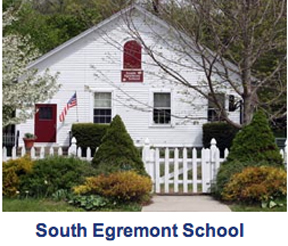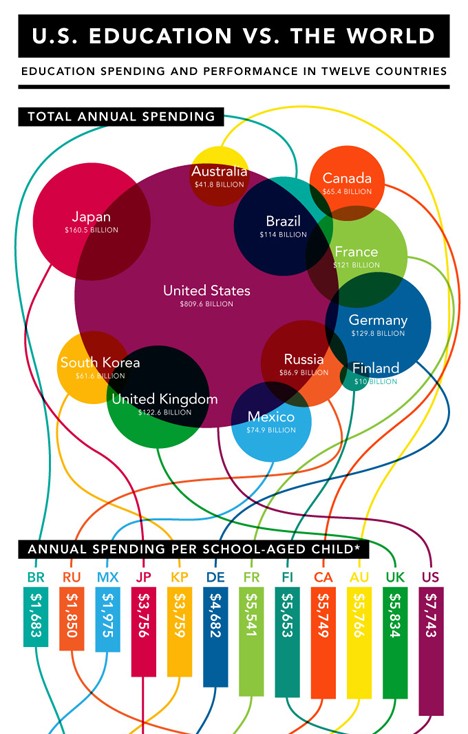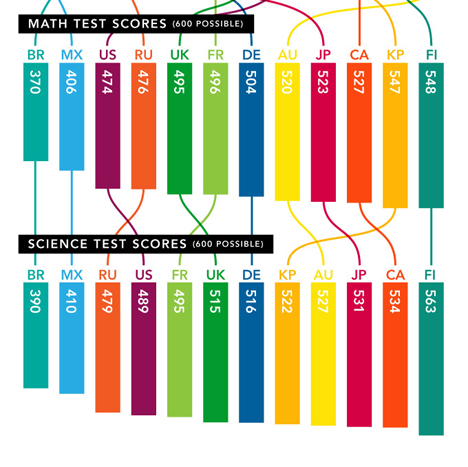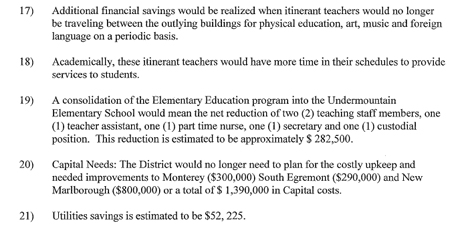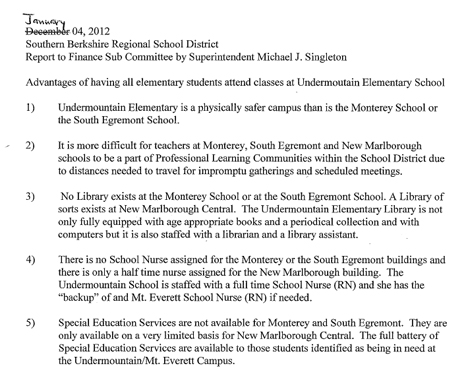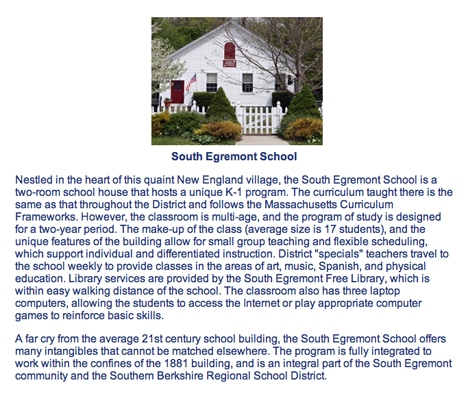By Mickey Friedman
February 4, 2012
No kids, a different district, so I am just an interested bystander in the raging debate about the small schools of Monterey, Egremont and New Marlborough.
Having taught I have a continuing interest in how education happens; as a citizen and taxpayer, I care about how much education costs and whether those dollars are spent wisely.
I’ve tried to teach seventh, eighth, and ninth graders in New York City. I’ve taught and counseled college students in both New York and Massachusetts. While being a student is hard, being a good teacher is even more difficult.
It’s hard to separate the issue of small schools and rising school budgets from the larger money mess we find ourselves in. More and more, because of a radically unfair tax structure that favors the wealthy, the middle class is ask to pay a disproportionate share for government services. And the middle class has less to offer up. Here, in the South Berkshires, struggling taxpayer/voters are asked each year for an up/down vote for a rising school budget they can barely understand.
I believe in the critical importance of our schools but at town meeting I am shown a school budget for millions and millions of dollars without clear line-item expenditures. If anyone protests, we’re told if we really care about the budget we should be attending the open meetings of the finance committee. While that might serve to satisfy the legal definition of transparency, it certainly doesn’t work for busy people trying to survive and who just want to see where their money is going.
Instead school administrators and teachers and former teachers get up to tell us how hard they are working to keep the budget in line and the larger message is clear: if you care about our kids you’ll vote yes to pass the budget.
I suspect a similar process has been at work in the Southern Berkshire Regional School District.
People question how we spend money on education because many feel we do a lousy job of it. According to 2009 statistics compiled in the CIA Fact Book, the United States spends $809 billion a year on education; that’s $7,743 per school-aged child. Finland spends $10 billion a year, or $5,653 per child. Canada spends $65.4 billion or $5,749 per child. As our politicians, Democratic and Republican, remind us, we’re the greatest, smartest nation on earth. Which means neither Finland nor Canada is. But somehow, spending far less money, their students do much better than ours learning math and science.
With a top score of 600, United States students finished tenth out of the top twelve nations in math with average scores of 474; the kids from Finland scored first with an average of 548; and the Canadians came in third with 527.
In science, we came in ninth with a score of 489. Finland was first with a score of 563, and the Canadians moved up to second with a score of 534.
By the way, according to MA DOE, per pupil costs for the year of 2010 were $14,546 for Berkshire Hill Regional and $13,804 for South Berkshire Regional.
Administrators committed to closing the small schools are talking about $282,500 in staff costs (two teaching staff members, one teacher assistant, one part time nurse, one secretary and one custodian) plus $52,225 in utilities. Then there’s the cost of fixing and maintaining the three buildings: Monterey ($300,000) and South Egremont ($290,000) and New Marlborough ($800,000) for a total of $1,390,000.
Parents are particularly upset because while money has been allocated over the years to fix these buildings, that money hasn’t been spent. Ironically, they’re being told by the same administration that chose not to make timely repairs that these capital costs are just too large to justify continuing to use these buildings.
Administrators make the case that everything is better at the centralized Undermountain Elementary School: the playground, the after school programs in Robotics and Theater, the gymnasium, the school nurse, the computers and the cafeteria. All of that is probably true. But why then are parents fighting so hard, if sometimes impolitely, for their local schools?
As we’ve seen from the statistics, you can throw money at schools and students but that doesn’t mean anyone will learn.You have to want to learn. You have to trust your teachers. You have to feel comfortable in school and feel connected to your fellow students.
I see and feel the difference in Great Barrington and Housatonic now that we have lost our neighborhood schools. Maybe you don’t. But I remember the kids walking to school in the morning and remember three o’clock when the kids filled the local stores in Great Barrington. The town was alive.
If we’re going to pay for education I want to pay for a system where the parents care. Let’s find a way to save our small local schools.
_________________________________________________________________________________
An earlier version of “Small Schools” was published in The Berkshire Record on February 2, 2012. After I finished I went to the website of the Southern Berkshire Regional School District where I found this description of the small, local South Egremont School:
Perhaps it’s time for the board and administration of the Southern Berkshire Regional School District to read and trust what they say about their small, local school.

